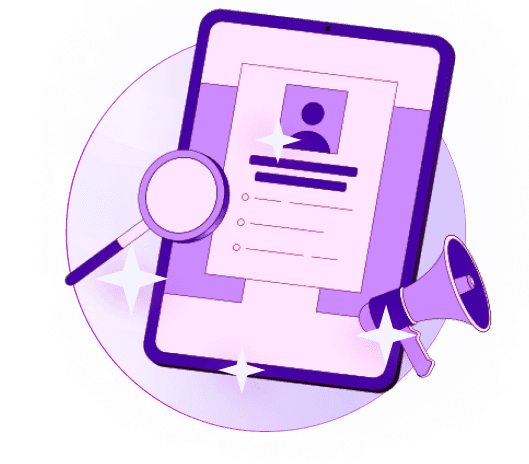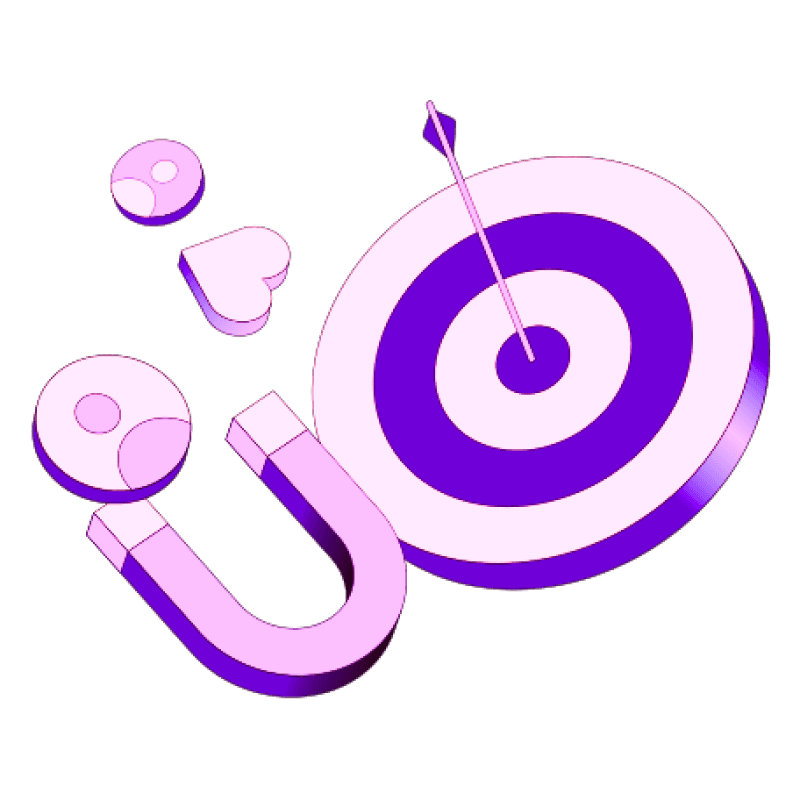Blogs
Articles

What Is Prospecting in Sales? [Strategies, Examples, Tips]
Did you know that the best sales prospecting campaigns deliver 2.7x more meetings, higher win rates, and help reps consistently achieve their sales goals?
In this comprehensive guide, we'll explore effective sales prospecting strategies, share real-world examples, and provide actionable tips to help you identify and convert more prospects into customers.
Rather than viewing prospecting as just another time-consuming task, we'll show you how to transform it into a powerful revenue driver for your business.
What is a prospecting campaign?
A prospecting campaign is a coordinated, multi-touch outreach strategy designed to convert potential customers into qualified leads. Essentially, it's the systematic process of contacting potential buyers through various channels to gage their interest in your products or services. The goal is to move qualified prospects into your sales pipeline for future conversion.
To be effective, a prospecting campaign requires persistence. Research shows it takes an average of 8 touches just to reach and generate a meeting with a new prospect. Gone are the days when a single call or email could secure a meeting—today's successful campaigns demand a strategic approach.
Marketing experts often refer to this coordinated effort as an "Attraction Campaign" - a series of carefully timed interactions using multiple communication channels. These touches typically include a mix of emails, phone calls, social media engagement, and sometimes direct mail. Each approach offers unique advantages - for instance, emails provide visually appealing pitches that can be forwarded, whereas calls enable direct conversation.
What are the different types of sales prospecting?
From a high-level perspective, prospecting campaigns fall into two main categories:
Inbound prospecting: This approach focuses on attracting potential customers through valuable content and marketing efforts. It's less intrusive and often generates higher-quality leads as prospects come to you voluntarily.
Outbound prospecting: This involves actively reaching out to potential customers through:
Cold calling and emailing to prospects who haven't shown prior interest
Social selling through platforms like LinkedIn
Networking at industry events
Warm calling to follow up with prospects who've shown some engagement
Direct mail campaigns that create tangible touchpoints
Why Prospecting Is Important for Sales Success?
Prospecting stands as the unsung hero of sales success, despite being considered the most challenging part of the sales process by 40% of salespeople. Yet this tough work pays extraordinary dividends—effective prospecting can increase conversion rates by up to 40%.
Fundamentally, consistent prospecting creates a compound effect that drives business growth. When sales representatives prospect weekly, month after month and year after year, appointments and new sales inevitably follow. This consistency prevents dangerous pipeline gaps that would otherwise appear months later when new leads are urgently needed.
Particularly powerful benefits of strategic prospecting include:
Increased efficiency through focusing on high-potential leads
Improved conversion rates with better-qualified prospects
Stronger customer relationships built on deeper understanding
Enhanced revenue generation and business growth
Competitive advantage by engaging prospects before competitors
Data-driven decision making to optimize resources
Scalable, repeatable processes across the organization
What’s the difference between sales prospecting and lead generation?
Many sales professionals use the terms "sales prospecting" and "lead generation" interchangeably, yet they represent distinct activities in the sales process. Understanding this difference is crucial for building effective sales strategies.
Sales prospecting is the active pursuit of potential customers who might be interested in your product or service. It involves direct outreach by sales representatives to identify qualified prospects and move them through the sales pipeline. This hands-on approach typically occurs after leads have been generated and requires personalized communication to establish relationships with potential buyers.
Conversely, lead generation focuses on attracting potential customers to your business through various marketing activities. This process aims to capture interest in your products or services and collect contact information from those expressing that interest. Lead generation casts a wider net compared to prospecting and sits earlier in the sales funnel.
How to measure sales prospecting success?
Measuring the effectiveness of your sales prospecting campaigns requires tracking specific metrics that align with your business objectives. Without proper measurement, you'll never know which strategies work and which need adjustment.
Key Performance Indicators Worth Tracking:
Quality Prospect Throughput - This measures both quality and speed of your prospect sourcing process. For optimal results, aim for 200 to 500 net new leads per rep per month. This steady flow ensures your pipeline stays healthy.
Reply-to-Connect Rate - This tracks the percentage of prospects who respond positively to your outreach. Target 1% to 2% reply-to-connect rates - anything higher indicates exceptional performance. This metric is far more valuable than open rates, which should be mostly ignored.
Completed Appointments - Count only completed calls that result in sales hand-offs, not reschedules or no-shows. Depending on your market size and deal value, you might target 5-30 completed hand-offs monthly.
Pipeline Value - This is ultimately what matters. If your prospecting metrics look good but your pipeline isn't growing, you might have targeting or process issues.
Conversion Rate - Calculated by dividing customers acquired by prospects contacted then multiplying by 100. A high rate indicates successful prospecting tactics.
Cost per Lead - This reveals the profitability of your prospecting efforts by dividing total prospecting costs by leads obtained.
Sales leaders define these target KPIs to ensure teams track toward specific revenue goals. When a rep's conversion rate exceeds targets, their sales strategies may be particularly effective and worth implementing team-wide.
Where does prospecting sit in the sales process?
In the chronological sequence of selling, prospecting sits firmly at the very beginning of the sales process. It represents the crucial first step that fuels everything that follows. Without effective prospecting, the rest of your sales activities lack foundation—imagine trying to build a house without first laying the groundwork.
Primarily, prospecting creates the initial connection between your company and potential buyers. During this phase, sales representatives identify potential customers and determine whether they have both a need for your product or service and the ability to afford it. This qualification process is fundamental to building a viable pipeline.
The typical progression of the sales process follows this path:
Prospecting/Lead Generation - Finding and qualifying potential customers
Presenting - Delivering personalized sales pitches to prospects
Quotation - Discussing terms and pricing with interested prospects
Closing - Finalizing the deal and addressing last-minute concerns
Won/Lost - Officially closing the deal or analyzing what went wrong
Fundamentally, prospecting transforms cold leads into warm opportunities that eventually become deals. The sequence flows as follows: sales and marketing source leads, sales qualifies those leads into prospects, sales nurtures prospects into opportunities, and finally, sales closes opportunities into deals.
What are examples of sales prospecting?
Successful companies implement varied sales prospecting approaches tailored to their unique business needs. Looking at real-world examples provides valuable insights into effective strategies.
A B2B software company that doubled sales annually for its first three years established precise pipeline management early on. Similarly, another software business created a sustainable sales pipeline following five key stages: initial contact, design stage, proposal, proof of solution, and close.
In the real estate industry, one company developed a specialized prospecting pipeline for short sales during economic downturns, breaking the process into five clearly defined stages from beginning to approval.
Sales development representatives typically reach out to prospects through three primary channels:
Phone conversations remain highly effective, with 70% of buyers accepting cold calls. Cold calling offers advantages over email by enabling meaningful human conversation rather than simply delivering pitches.
Email prospecting provides cost-effective scaling opportunities. Creating effective email sequences focused on benefits rather than features helps prospects understand value proposition.
Social media engagement, primarily through LinkedIn for B2B prospects, allows representatives to establish connections through direct messaging, templates, or short videos that inject personality into the process.
Conclusion
Sales prospecting undeniably serves as the foundation of any successful sales strategy. Throughout this guide, we've explored how effective prospecting requires persistence, with most deals needing around 8 touches before generating a meeting. We've also examined the critical differences between inbound and outbound prospecting approaches, each offering unique advantages depending on your business goals.
Successful prospecting campaigns leverage multiple channels simultaneously. Phone conversations create personal connections, emails scale your efforts, and social media engagement builds relationships over time. This multi-channel approach significantly increases your chances of breaking through the noise.
Most importantly, prospecting must become a consistent habit rather than a sporadic activity. Teams that prospect weekly create a compound effect that drives business growth year after year.
You can strengthen your prospecting effectiveness by exploring tools like Persana.AI that help optimize your outreach strategies and improve conversion rates.
FAQ
What is a good prospect?
A qualified prospect possesses five essential characteristics that distinguish them from regular leads. First, they're aware of a specific need or problem they want to solve—they might not know your solution exists, but they recognize their challenge. Second, they have both financial resources and decision-making authority to make purchases, preventing you from wasting time with contacts who can't approve deals.
Who does prospecting in sales?
The responsibility for sales prospecting varies based on company size and structure. In startups without dedicated sales teams, founders frequently handle all prospecting activities. At small-to-medium businesses, sales professionals might do their own prospecting alongside other responsibilities. Larger organizations typically employ specialized roles, primarily Sales Development Representatives (SDRs) who focus on qualifying inbound leads and outreach.
What is sales prospecting?
Sales prospecting constitutes the strategic process of identifying and connecting with potential buyers. As the first step in the sales cycle, it involves finding and engaging qualified leads—transforming them into prospects ready to enter your sales pipeline. Specifically, prospecting differs from generating general leads; it focuses on one-to-one communication through outbound activities like cold calls, emails, and social media outreach.
What are the 5 P's of prospecting?
The 5 P's of prospecting provide a structured framework that helps salespeople create consistent and effective outreach strategies. Throughout sales literature, you'll find several interpretations of these principles, each offering valuable guidance for prospecting campaigns.
One of the most widely referenced frameworks includes Purpose, Preparation, Personalization, Perseverance, and Practice.

Create Your Free Persana Account Today
Join 5000+ GTM leaders who are using Persana for their outbound needs.
How Persana increases your sales results
One of the most effective ways to ensure sales cycle consistency is by using AI-driven automation. A solution like Persana, and its AI SDR - Nia, helps you streamline significant parts of your sales process, including prospecting, outreach personalization, and follow-up.



